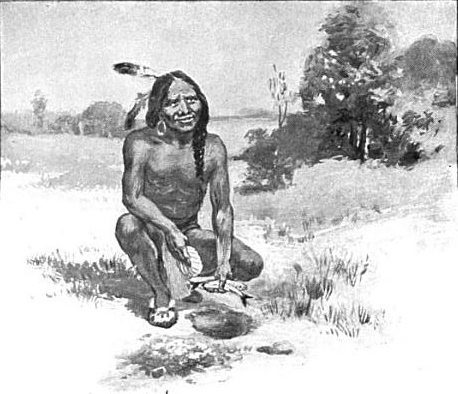For our final Native American Cinderella tale, I am sharing a Zuni version called The Turkey Girl retold by Penny Pollock. Now this story is a bit of a stretch to be a Cinderella tale, but I have seen it on various lists of types of Cinderella tales, so I am sharing it. First a bit about the Zuni people.
The Zuni live in New Mexico and have been there for 3,000 to 4,000 years (according to archeologists' estimations). Their reservation is about 450,000 acres. They are farmers of maize (corn) and wheat. They also now engage in jewelry making as an important income to the Zuni people. The traditional Zuni life is a matrilineal line. They have very specific groups and order for religion and life. Zunis still practice their own religion and beliefs. They are very artistic and express their beliefs in their art. The Zuni language is believed to be more than 7,000 years old.
The Zuni live in pueblo style of houses. Pueblos are built of clay and often are built into the ground or on top of one another. Here is a picture I found of a Zuni Pueblo. (Sources: The Pueblo of Zuni, Zuni Indians, Wikipedia)
Now onto our story. In the author's note it is mentioned that Frank Hamilton Cushing included this tale in his collection of Zuni folktales. Cushing traveled to New Mexico in 1879 to study the Zuni. He admired them so much that he became a member of the tribe and lived with them.
A young orphan girl lived in the shadow of Thunder Mountain
and nestled against the edge of the pueblo village, Matsaki.
She was very poor and herded turkeys for a living. The wealthy families of
Matsaki valued the turkey tail feathers for decorating
prayer sticks and ceremonial masks. They paid the young girl with corn and
cast-off clothes and called her the Turkey Girl.
Her days started at dawn when she led the villagers' turkeys to the
flat-topped mesa of Thunder Mountain to graze. Then at sunset she led
the turkeys back to their stockade of cedar sticks. The turkeys were her only
friends. The humans did not talk to her even when she went to the
spring to get water and saw others there.
One night while at the spring, a herald-priest
announced from one of the flat housetops that a Dance of the Sacred Bird would
be held in Hawikuh in four days time. The Turkey Girl caught the excitement and imagined herself
dancing with others. She could not stop dreaming of the dance and told the
turkeys all about her dreams. On the day of the dance, the villagers left at
dawn for Hawikuh. The Turkey Girl was left with the turkeys and her normal day,
however she had tears running down her cheeks. While walking along the birds cause a commotion and
get her attention. Then a huge turkey stepped forward and begins to talk to her and
tells her she shall go to the dance. Then he tells her the turkeys will take care of
her tattered clothes if she goes into the pen with them.
In their pen the turkeys break into song and dance
and clean the girl. Then they have her undress. Swaying up and down
the turkeys tread and tap new life into her clothes. They sing while they
work. Soon she is dressed in a white
doeskin dress belted with red and yellow cloth. They give her rare shells and beautiful moccasins. Next the turkeys cough up jewels that the people have dropped on the ground over the years. Then the turkeys give her one
condition--she must not forget them and will show this by returning to them before Sun-Father
returns to his sacred place and while she is gone to leave their pen unlocked
so if she does not return before night they will be free.
She rushes off to the dance feeling beautiful and special. When she arrives the dancing has already started.
She hears music from drums, flutes, turtle rattles and notched sticks. The musicians miss a beat when
they see the beautiful stranger. She
joins the dance and has a wonderful time. The braves want to dance near her. As
the sun's rays began to go down, she thinks when the music dies I will leave,
but with each break the music started right back up and she continued to dance. As darkness approaches she thinks of leaving, but a brave
brushes against her and she wonders why she will leave for turkeys. Then as night sets in she remembers the kindness of the
turkeys and she runs home to their pen. She however is too late. The turkeys had waited for the sun to set but left Matsaki
forever. She is full of sorrow and even more so when she sees her
dress was back to rags. She understands she has lost her turkey friends forever.
From this day on the turkeys have lived apart from their
tall brothers for the Turkey Girl had not kept her word.
Join us later this week for more on Native Americans!! Also visit last week's fairy tales for other Native American versions of Cinderella.

























